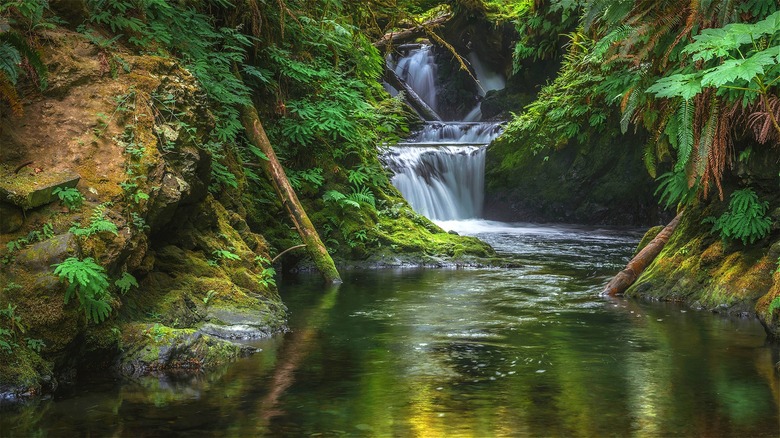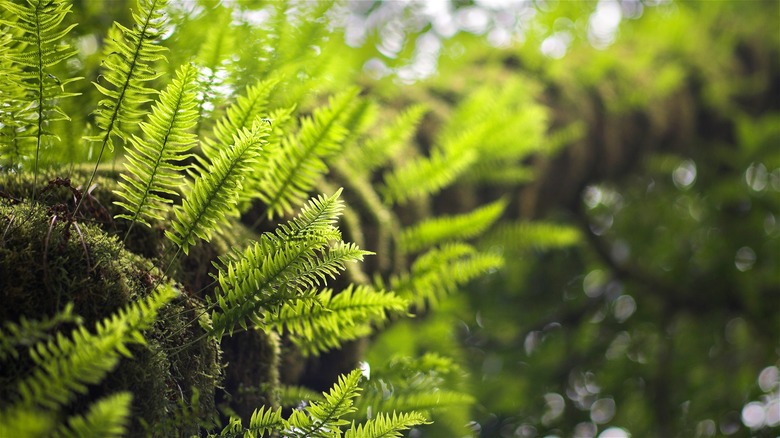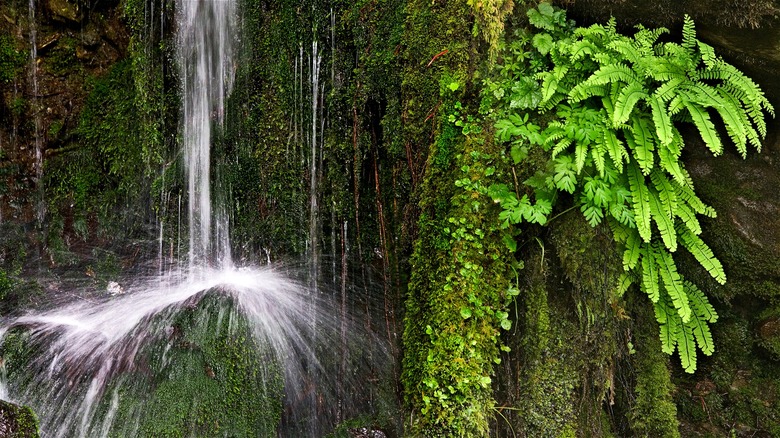This Overlooked Washington Rainforest Is A Spectacular Lush Area Begging To Be Explored
Are you sure you want to visit a rainforest? With the whooping monkeys, the kaleidoscopic birds, and the immensely lush foliage, it's understandable that many dream of exploring the spectacular lungs of our planet. But are you ready for just how dangerous and inhospitable rainforests can be? Take the Amazon Rainforest, for example. The place is teeming with dangerous animals you wouldn't want to see, from jaguars and anacondas to electric eels, razor-toothed piranhas, and fearsome bullet ants. And don't forget the poison dart frogs, which are no longer than 1.5 inches but possess enough toxin to kill 20 people or 20,000 mice.
Luckily, you most likely don't have to tolerate such danger in other rainforests around the world. In fact, if you're an American, you don't even have to leave the country to explore lush rainforests at all. Just head to Olympic National Park in Washington State, one of the best parks in the country for beating the heat. Here, you will find the beautiful Quinault Rainforest, a verdant ecosystem where up to 15 feet of rain waters the canopy of towering cedars and fir trees every year.
How to visit Quinault Rainforest
The great outdoors can have a rejuvenating impact on one's psyche, but be honest with yourself — can you handle genuine wilderness? That is what the rainforests of South and Central America essentially are, even if you don't stray all that far from the path. For most travelers — even seasoned hikers — the best experiences balance nature with civilization. With its park infrastructure and three-hour proximity to Seattle, Quinault Rainforest strikes that balance as well as anywhere in the Pacific Northwest — a region of mountains, volcanoes, and even the longest beach in America.
Public transport is possible, but as with most of America, urban or otherwise — cars are best. If you're in Seattle, take the I-5 south 60 miles through Olympia (the state capital) and continue west along US-12 before turning right at the town of Montesanto and heading north 55 miles to Quinault. For a quick, popular route to start the day, park by the Quinault Rainforest Trailhead on Lake Quinault's south bank.
What to expect in Quinault Rainforest
You don't have to take a crash course in flesh-eating critters when you visit Quinault Rainforest. As far as animals are concerned, there is little danger beyond the usual North American creatures, namely black bears, mountain lions, coyotes, and elk. With that peace of mind, hikers can fully enjoy the rainforest's rich biodiversity among the ferns and devil's club — a broad-leafed shrub native to the Pacific Northwest. You'll find a variety of plants and bushflowers here, from bear grass and skunk cabbage to Indian plums, Indian paintbrush, and berries of the salmon, thimble, blue, and black varieties.
Diversity of environment brings diversity of species. Banana slugs manifest on the damp, shady forest floor, where they feast on fungi and plants. Above them are Canada geese, trumpeter swans, and an abundance of osprey, herons, and bald eagles, which look for salmon in the meandering forks of the Quinault River.


